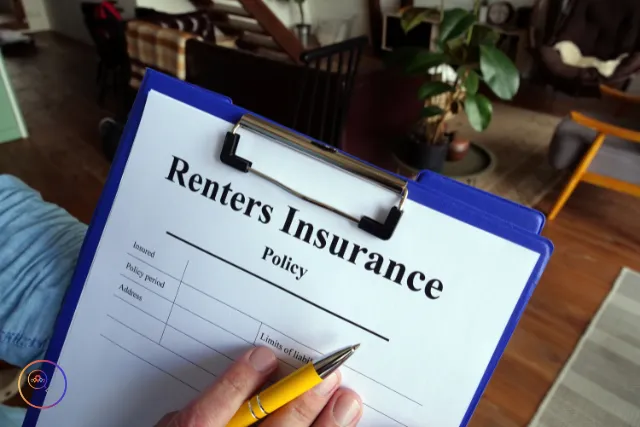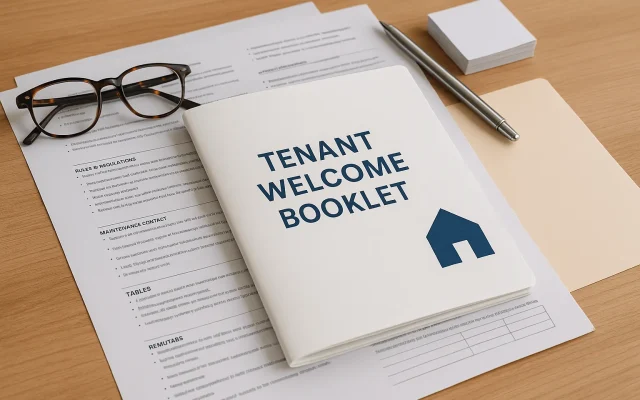“Sometimes life throws you curveballs, but loss of use renters insurance is your safety net when the unexpected happens.”
Imagine this: a fire damages your apartment or rental homes. Suddenly, you’re faced with hotel bills, restaurant meals, and the stress of being displaced from your home. This is where loss of use renters insurance comes in. It’s not just a technical term buried in your policy—it’s your lifeline when your home becomes uninhabitable. Let’s dive into how it works and why it matters.
Get A Coverage Now!
Starting from $5/mo.
What Exactly Is Loss of Use Renters Insurance?
Loss of use renters insurance (also called additional living expenses or ALE coverage) helps cover the costs you incur when a covered peril—like a fire or windstorm—makes your home temporarily unlivable. It’s designed to bring you back to your normal standard of living, but it won’t pay for luxuries. If you’re typically renting a cozy one-bedroom apartment, don’t expect to be reimbursed for a luxury penthouse rental.
In short, loss of use coverage acts as a financial cushion during a challenging time. It’s usually included in standard renters insurance policies but comes with limits and exclusions—more on that in a bit.
What Does Loss of Use Coverage Actually Cover?
Here’s a closer look at what’s typically covered under loss of use renters insurance:
Temporary Housing Costs
Covers the cost of staying in hotels, short-term rentals, or even an Airbnb if your home becomes uninhabitable due to a covered peril. Whether it’s a one-night stay or several months of temporary accommodation, this coverage ensures you have a safe place to stay while repairs are made.
Increased Food Expenses
If you can’t cook because your kitchen is unusable, you’ll be reimbursed for dining out—but only the amount above your normal grocery budget. For instance, if you typically spend $300 monthly on groceries but are forced to spend $600 eating out, your insurer will reimburse the $300 difference.
Transportation Costs
Includes additional gas, public transportation fees, or parking expenses when your temporary housing increases your daily commute. For instance, if moving to a new location adds 10 extra miles to your trip each day, the added fuel costs and parking fees could be reimbursed under loss of use coverage.
Pet Boarding
Covers the cost of boarding your furry friends if they can’t stay with you due to a covered peril. Whether it’s for a few days or weeks, this coverage ensures your pets are cared for while you focus on getting back to your normal living situation.
Storage Fees
Pays for a storage unit if you need a place to keep your belongings temporarily while your home is being repaired. This coverage ensures your items are safe and secure, sparing you the stress of finding a last-minute solution during a challenging time.
Get A Coverage Now!
Starting from $5/mo.
Example: Let’s say you typically spend $300 a month on groceries. However, staying at a hotel due to a covered loss makes dining out unavoidable, and your food costs rise to $600. Your insurance steps in to cover the $300 difference, helping to ease the financial strain during a challenging time.
Know Your Limits: How Much Coverage Do You Have?
Loss of use coverage isn’t unlimited, and understanding the limits of your policy is essential for avoiding surprises. Renters insurance often defines this coverage as either a flat dollar amount—typically between $3,000 and $5,000—or as a percentage of your personal property coverage. For example, if your policy allocates 40% of personal property coverage to loss of use and you’re insured for $50,000, your loss of use limit would be $20,000.
These limits matter because expenses can add up quickly during displacement. Temporary housing, dining out, and additional transportation costs may rapidly approach your policy’s cap. If the covered expenses exceed your limit, you’ll need to pay the difference out of pocket. This is why knowing your policy’s specifics is so important.
Pro tip: Review your renters insurance policy regularly to ensure it aligns with your lifestyle. If you’re concerned your limits might fall short during a potential emergency, consider discussing higher coverage options with your insurer. Preparing in advance can save you significant financial stress when the unexpected strikes.
What Isn’t Covered?
Loss of use coverage is comprehensive but not all-encompassing. Here are a few common exclusions:
- Normal Living Expenses: Daily costs you’d have regardless of the disaster, like your regular rent or mortgage payments, aren’t covered. This means that even if your home is uninhabitable, you’re still responsible for paying these usual expenses alongside any other costs, which makes understanding your policy’s limits and exclusions crucial.
- Uncovered Perils: If the damage was caused by something not listed in your policy (e.g., floods without a flood endorsement), loss of use doesn’t apply. This makes reviewing your policy critical to avoid unexpected expenses. Common exclusions like earthquakes, mudslides, or bedbug infestations may require additional endorsements for protection.
- Indirect Losses: Lost income from working remotely or other indirect financial hits aren’t covered. For instance, if you face reduced earnings due to your inability to work during displacement, this would not be reimbursed under loss of use coverage, as it focuses solely on tangible additional living expenses.
Bottom line? Familiarize yourself with what’s included and excluded to avoid surprises during a claim.
Get A Coverage Now!
Starting from $5/mo.
Filing a Loss of Use Claim: A Step-by-Step Guide
Filing a claim might seem daunting, but it doesn’t have to be. Follow these steps to streamline the process:
- Review Your Policy: Start by carefully reading the declarations page, which outlines your coverage limits, provisions, and the specific details of what your renters insurance covers. This page provides clarity on your benefits, ensuring you’re prepared for emergencies and aware of any limitations that might impact your claim process.
- Notify Your Insurer Immediately: Contact your insurance provider as soon as your home becomes uninhabitable. Be prepared to provide detailed information about the incident, including what caused the issue, the extent of the damage, and any immediate steps you’ve taken to mitigate further problems. Quick communication speeds up the claims process.
- Document Everything: Keep receipts for hotels, meals, gas, and any other additional expenses you incur. Take detailed photos or videos of the damage to support your claim, ensuring every expense and issue is clearly documented. Having organized evidence readily available will streamline the claims process and improve the likelihood of full reimbursement.
- Submit Your Receipts: Send an itemized list of expenses to your insurer for review, ensuring clarity and speeding up processing. Include receipts for housing, meals, and other documented expenses.
- Follow Up: Maintain regular communication with your insurance adjuster to resolve any questions or issues promptly. Consistent follow-ups ensure a smoother claim process and faster reimbursement for your expenses.
Pro Tip: The more organized your documentation, the quicker the reimbursement process.
The Fine Print: Understanding Covered Perils
Loss of use renters insurance only kicks in if the damage stems from a covered peril. These typically include:
- Fire and smoke
- Windstorms or hail
- Lightning
- Vandalism or theft
- Water damage from burst pipes
However, events like floods, earthquakes, or bedbug infestations are usually excluded unless you have additional endorsements. Double-check your policy to understand what’s covered and consider upgrades if necessary.
Get A Coverage Now!
Starting from $5/mo.
The Role of Civil Authority Provisions
Loss of use coverage doesn’t just apply to damage directly impacting your home. If civil authorities block access to your property due to safety concerns, you may still be eligible for coverage. For instance, if a fire in a neighboring building causes officials to declare the area unsafe, your renters insurance could cover additional living expenses for up to two weeks. This provision is often called “prohibited use” or “civil authority prohibited use.”
Here’s how it works: While you’re displaced, you can claim temporary housing costs, increased food expenses, and even storage fees, provided these are directly tied to the restricted access to your home. However, it’s essential to document the situation carefully—save any notices or communications from civil authorities and keep detailed records of your additional expenses.
Civil authority provisions are a vital part of loss of use coverage, ensuring that even in situations beyond your control, you have financial support to maintain your standard of living.
Why You Should Keep Receipts (Seriously!)
Receipts are your best ally when filing a loss of use claim. Insurers require detailed proof of additional expenses, so it’s crucial to save receipts for every qualifying cost. These include:
- Hotel stays, Airbnb rentals, or temporary housing arrangements
- Meals and restaurant bills exceeding your usual grocery budget
- Parking fees incurred due to relocation
- Storage rentals for safeguarding your belongings
Without proper documentation, reimbursement becomes significantly harder. Get into the habit of organizing and preserving all receipts during your displacement. Use a folder or digital tool to keep them secure and accessible. Clear and organized records not only streamline the claims process but also improve your chances of getting the full reimbursement you deserve.
Tips for Maximizing Your Coverage
Maximizing your loss of use coverage ensures you get the most out of your policy during a challenging time. Here are key strategies:
- Communicate Early: Notify your insurer immediately if your home becomes uninhabitable. Clear, early communication can accelerate the claims process.
- Track Your Expenses: Keep a detailed record of additional costs using an app or spreadsheet. Document everything from hotel bills to transportation fees.
- Understand Time Limits: Most policies cap coverage at 12 or 24 months. Knowing this timeframe helps you plan effectively for temporary arrangements.
- Ask for Help: If you’re unclear about your policy details, reach out to your insurance agent for clarification. They can guide you on what qualifies as reimbursable expenses.
Taking these proactive steps can help you navigate the claims process smoothly and ensure you receive the financial support you’re entitled to.
Get A Coverage Now!
Starting from $5/mo.
Conclusion: Protect Yourself With Loss of Use Renters Insurance
Displacement is undoubtedly stressful, turning daily routines into logistical challenges. Loss of use renters insurance acts as a safety net, easing the financial strain so you can focus on recovery and returning to normalcy. By covering unexpected expenses like temporary housing, dining out, or pet boarding, this coverage ensures you’re not overwhelmed during an already difficult time.
Understanding your policy’s coverage, limits, and exclusions is critical. Take proactive steps to review your policy and confirm it aligns with your needs. Don’t hesitate to reach out to your insurance provider with questions or concerns. Clarity and preparation today can save you from future financial stress.
Life’s curveballs are inevitable, but with the right protection in place, you’ll be ready to handle the unexpected. Secure your peace of mind by ensuring your renters insurance provides adequate loss of use coverage—because a little preparation can make all the difference.







